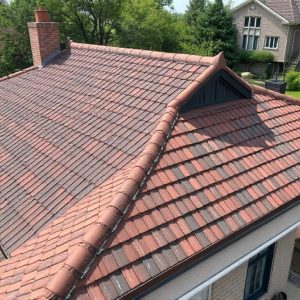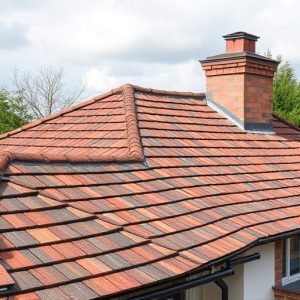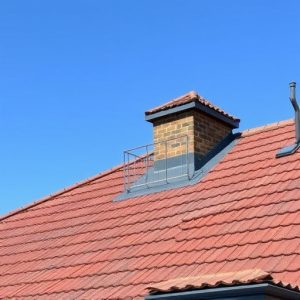10 Key Steps for Winter Roof Maintenance: Protect Your Home Against Snow Damage
As winter approaches, taking proactive measures for roof care is essential to safeguard both safety…….
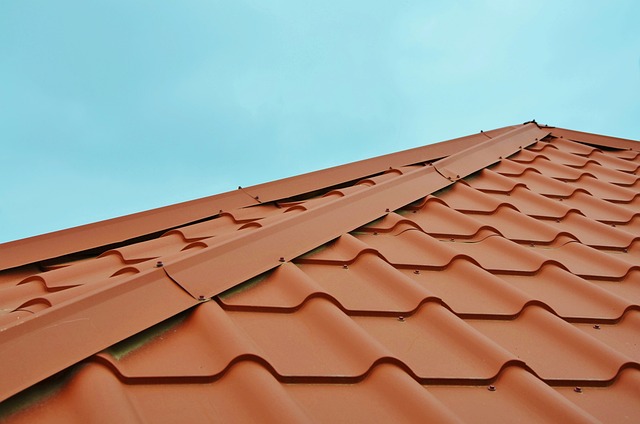
As winter approaches, taking proactive measures for roof care is essential to safeguard both safety and structural integrity. Homeowners must regularly monitor snow accumulation, as heavy precipitation can exceed a roof's load-bearing capacity and potentially lead to collapse. Steeply sloped roofs generally withstand snow loads better than flat or low-slope ones, which are prone to damage from ice dams. Roof rakes are a safer option for clearing snow without physically climbing onto the roof. Gutter maintenance is equally important; clearing gutters of debris prevents water damage from snowmelt and reduces the risk of basement flooding or foundation erosion. Attention to gutter security and damage inspection can mitigate winter-related issues. Proper attic insulation and ventilation are crucial in preventing ice dams, which form when heated air melts roof snow, causing water backups and potential leaks. Utilizing effective insulation materials with an appropriate R-value and sealing attic gaps can help regulate temperature and reduce ice dam formation. Always prioritize safety during manual snow removal by using ladders, boots, and tools that keep you at a safe distance from the roof's surface. Deicers should be applied cautiously to avoid roof damage or leaks. Regular post-snowfall inspections and professional advice for challenging roofs are recommended throughout the winter season to ensure both safety and the longevity of your roofing system.
As winter’s chill sets in, safeguarding your home against the season’s harsh elements becomes paramount. This article outlines ten pivotal tips for maintaining your roof’s integrity throughout the colder months. From assessing snow and ice accumulation to ensuring proper insulation and ventilation, each step is crucial for preventing damage from ice dams, water intrusion, and structural wear. Learn how to inspect gutters, downspouts, and shingles, as well as trim overhanging branches and address potential leaks. With our comprehensive checklist, you’ll be prepared to protect your home with diligent winter roof maintenance, ensuring your family’s safety and the longevity of your roofing system.
- Assessing Snow and Ice Accumulation on Your Roof
- Inspecting Gutters and Downspouts for Proper Drainage
- Ensuring Adequate Insulation to Prevent Ice Dams
- Ventilating Attics to Prevent Condensation and Mold Growth
- Safely Removing Snow and Ice Buildup
Assessing Snow and Ice Accumulation on Your Roof

When winter’s chill sets in, understanding how to manage snow and ice accumulation on your roof becomes crucial for maintaining its integrity. Roofing materials can withstand a certain amount of weight from frozen precipitation, but beyond that threshold, the risk of structural compromise increases significantly. It’s imperative to regularly assess the level of snow and ice present; this is not just about preventing a roof collapse but also ensuring the safety of your home’s occupants and preserving the longevity of the roofing system.
Snow loads can vary greatly depending on factors like the type of roof, slope, local climate conditions, and the specific materials used in your roofing construction. A heavy snowfall might not pose an immediate threat to a steeply sloped roof designed to shed snow easily, but a flat or low-slope roof could be at greater risk. Homeowners should invest time in understanding their roof’s capacity and the potential risks associated with ice dams and snow accumulation. Utilizing roof rakes to clear snow from safe ground can help alleviate the weight without having to physically ascend onto the potentially hazardous surface. Regular checks, especially after significant snow events, are a key aspect of responsible roofing maintenance throughout the winter season.
Inspecting Gutters and Downspouts for Proper Drainage

When winter’s chill sets in, ensuring your gutters and downspouts are clear of debris is a pivotal aspect of roofing maintenance. Clogged gutters can lead to significant water damage as melting snow and ice build up. Homeowners should begin by conducting a thorough inspection of the entire gutter system. Look for any leaves, twigs, or other detritus that has accumulated over the fall and remove these materials carefully to maintain proper drainage. Ensure that downspouts are securely fastened and directed away from the house to prevent water pooling near the foundation, which can cause basement flooding or erode the soil supporting your home. Additionally, check for any signs of damage, such as cracks or leaks, that could compromise the system’s effectiveness. If downspouts are disconnected or improperly angled, water may back up and freeze, exacerbating the problem. Regular maintenance in autumn can prevent a cascade of issues during winter, safeguarding your roofing investment and the structural integrity of your home.
Ensuring Adequate Insulation to Prevent Ice Dams

When winter’s chill sets in, adequate insulation becomes paramount for maintaining both the integrity of your roof and the comfort within your home. Ice dams, those ridge-like formations of ice that can cause significant water intrusion and damage, are a common issue during snowy seasons. They occur when heat escapes from a poorly insulated attic, causing the snow on your roof to melt and run down to the eaves or gutters where it re-freezes. This freeze-thaw cycle can lead to backed-up water, which in turn can seep under shingles, resulting in leaks, wood rot, and other costly repairs.
To prevent such issues, proper roofing insulation is a must. Begin by ensuring your attic is well-insulated with materials like fiberglass or spray foam, with an R-value appropriate for your climate zone. Ventilation plays a crucial role too; adequate soffit and ridge vents allow for the natural airflow that helps regulate the roof’s temperature. Additionally, check for any gaps where warm air could escape into the attic, sealing them with caulk or weatherstripping. By addressing insulation and ventilation, you can significantly reduce the risk of ice dams and safeguard your home against the ravages of winter. Roofing professionals can assess your current setup and recommend the best course of action to ensure your roof is ready to handle the frosty season.
Ventilating Attics to Prevent Condensation and Mold Growth
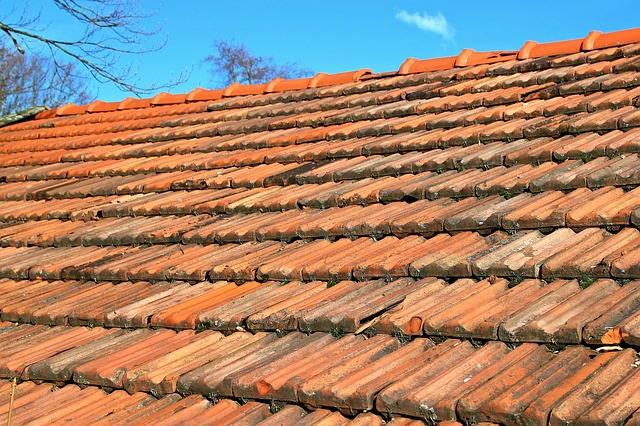
Safely Removing Snow and Ice Buildup

When winter’s frosty grip takes hold, accumulated snow and ice on your roof can pose significant risks to both your home’s structure and your family’s safety. As such, it is crucial to address snow and ice buildup with care. To prevent the excessive weight from causing damage, consider the following tips for safely removing snow and ice from your roofing system. Firstly, always prioritize safety when attempting to clear your roof. Use a sturdy ladder that reaches at least two-thirds of the roof’s height, ensuring it is placed on a firm, level surface. Wear non-slip boots with good traction to mitigate slipping risks when walking on snowy or icy surfaces. Utilize tools such as a roof rake to clear snow from the ground, which can help minimize the need to physically step onto the roof. If manual removal is necessary, use a shovel with an extendable handle to avoid close contact with the roof’s surface. For ice buildup, apply calcium chloride-based deicers, as they are less damaging to roofing materials than rock salt. Apply these cautiously and only as directed to prevent leaks or other damage. Regularly inspect your roof after significant snowfall events, and consider professional assistance for complex or steep-pitched roofs. By taking these precautions, you can maintain the integrity of your roofing while keeping yourself and your loved ones safe throughout the winter season.
roofing maintenance during winter is crucial to safeguard your home from the season’s harsh effects. Homeowners should take proactive steps, such as regularly assessing snow and ice accumulation on their roofs, inspecting gutters and downspouts for proper drainage, ensuring ample insulation to prevent ice dams, ventilating attics to avert condensation and mold growth, and employing safe methods when removing snow and ice buildup. By following these 10 essential winter roof maintenance tips, you can protect your property from potential water damage and extend the longevity of your roof system. Taking these precautions now will help ensure your home remains secure and comfortable throughout the colder months and beyond.
